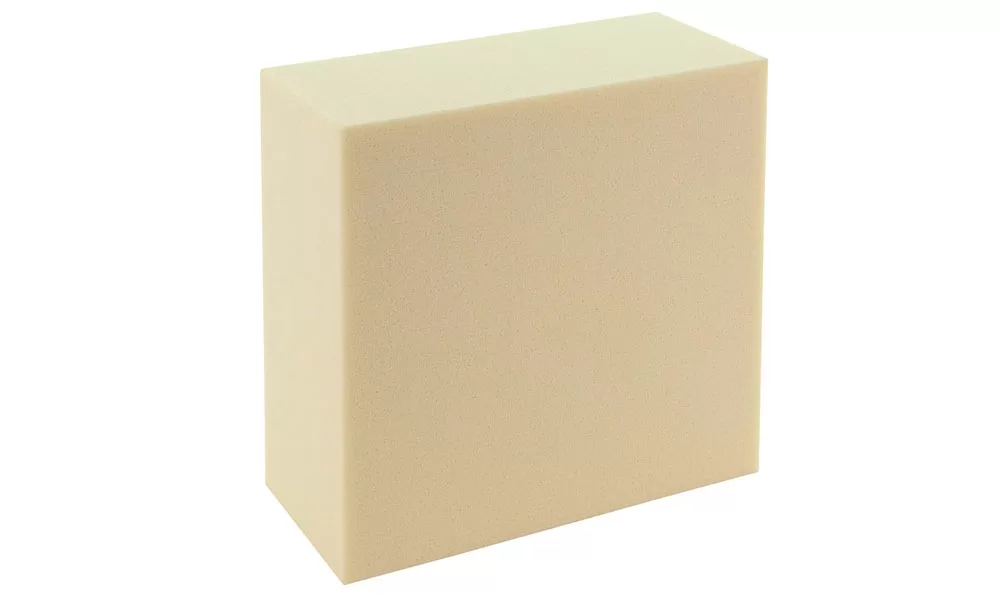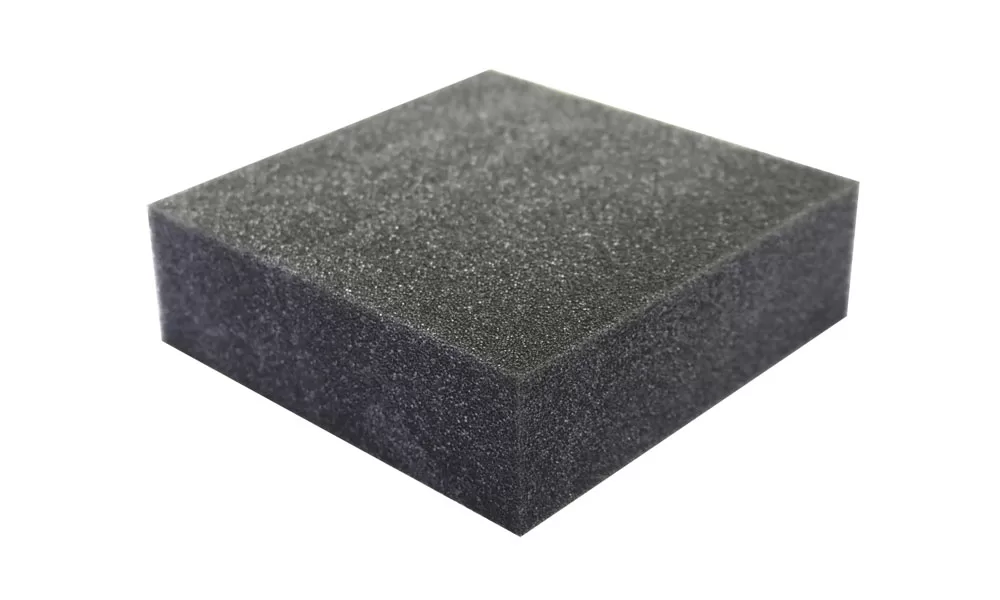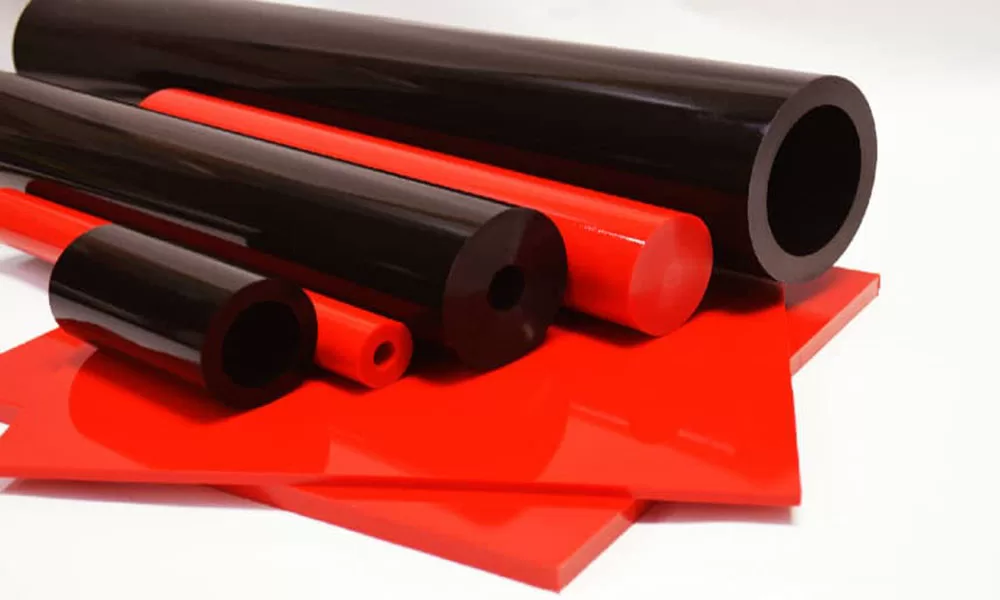O poliuretano é um material polimérico comum com fortes propriedades físicas e químicas. Geralmente feito pela reação de isocianato e poliol, tem boa resistência ao desgaste, resistência à corrosão, resistência à oxidação e resistência ao calor. Eles são amplamente utilizados nas áreas industrial, de construção, médica e automotiva. No entanto, o desempenho dos materiais de poliuretano é afetado por fatores como métodos de preparação, formulações e processos, por isso é necessária uma série de testes para avaliar o seu desempenho.

Definição e Classificação
O poliuretano (PU) é um material polimérico gerado pela reação de isocianato e poliol (ou poliéter, poliéster e assim por diante).. É amplamente utilizado em construção, transporte, medicina, móveis, eletrônicos, embalagens e outras áreas.
- Poliuretano rígido: Também conhecido como espuma de poliuretano, geralmente utilizado em isolamento, isolamento térmico, enchimento e modelo, com leveza, isolamento térmico, absorção sonora, entre outras características.
- Poliuretano macio: Também conhecido como elastômero, é comumente usado na fabricação de almofadas, assentos, travesseiros, colchões e protetores de sapatos. Possui boa elasticidade, conforto e resistência ao desgaste.
- Revestimento de poliuretano: Usado principalmente para revestimento de superfície, anticorrosão e outros campos, com boa resistência química, resistência à abrasão, resistência à água e assim por diante.
- Elastômero de poliuretano: Utilizado principalmente na fabricação de rodízios, corrimãos e amortecedores, com boa elasticidade, resistência ao desgaste e resistência química.
- Fibra de poliuretano: Comumente utilizada na fabricação de tecidos, coletes à prova de balas e materiais de isolamento, com leveza, alta resistência, boa resistência à abrasão e assim por diante.
- Outros produtos de poliuretano: como cola de poliuretano, selante e adesivo para construção, têm amplas perspectivas de aplicação.
Composição e características básicas
Composição Básica
- Isocianato: O isocianato é uma das principais matérias-primas dos materiais poliuretânicos, geralmente diisocianato ou poliisocianato, que contém dois grupos isocianato (N=C=O) em sua estrutura química.
- Poliol: O poliol é outra matéria-prima principal dos materiais de poliuretano, incluindo poliéter poliol poliéster poliol e assim por diante. Sua estrutura química contém vários grupos hidroxila (-OH).
- Moléculas de cadeia longa: A formação de materiais de poliuretano requer a reação de isocianatos com polióis para produzir moléculas de cadeia longa, formando assim polímeros.
Propriedades dos materiais
- Boa resistência à abrasão: Possui boa resistência à abrasão e é adequado para a fabricação de produtos de alta resistência e alta resistência à abrasão.
- Boa resistência à corrosão: Possui boa resistência à corrosão e pode ser utilizado na fabricação de produtos com resistência à corrosão.
- Boa resistência a altas temperaturas: Possui boa resistência a altas temperaturas e pode ser utilizado na fabricação de produtos em ambientes de alta temperatura.
- Pode ser preparado em vários formatos: Pode ser preparado em vários formatos por meio de diferentes processos de preparação, como espuma rígida, espuma macia, revestimento, elastômero e assim por diante.
Método de preparação e fluxo de processo
Os materiais de poliuretano são geralmente preparados pelo método de mistura de pré-polímero, e o fluxo específico do processo é o seguinte:
- Preparação da matéria-prima: Misture o isocianato e o poliol em uma determinada proporção, o que geralmente precisa ser feito sob determinadas condições de temperatura e umidade para evitar umidade no material.
- Mistura de reação: Adicione o isocianato e o poliol misturados ao misturador, controle a temperatura e o tempo da reação e faça-os reagir para produzir material de poliuretano.
- Tratamento de estabilização: O material de poliuretano precisa ser estabilizado após a reação para melhorar sua estabilidade de desempenho.
- Processamento e moldagem: Os materiais de poliuretano estabilizados são preparados em diferentes formatos por equipamentos de processamento e moldagem.
O processo específico pode ser ajustado e otimizado de acordo com diferentes necessidades de preparação, por exemplo, aditivos podem ser adicionados durante o processo de mistura de reação para melhorar a velocidade de polimerização e reduzir a viscosidade, e diferentes métodos de moldagem podem ser escolhidos durante o processo de processamento e moldagem, como moldagem por injeção, calandragem e pulverização. Deve-se notar que as condições de reação precisam ser controladas durante a preparação de materiais de poliuretano, a fim de evitar a geração de substâncias voláteis nocivas. Além disso, o processo de formulação e preparação de materiais de poliuretano precisa ser otimizado de acordo com os diferentes requisitos de aplicação, a fim de obter melhor desempenho.
Métodos de teste de propriedades físicas
Diferentes métodos de teste são aplicáveis a diferentes indicadores de desempenho físico, por isso é necessário selecionar o método de teste apropriado de acordo com as necessidades e propósitos específicos ao realizar testes para obter resultados de teste precisos. Ao mesmo tempo, os padrões e especificações de teste precisam ser seguidos para garantir a confiabilidade e precisão do processo de teste.
- Teste de densidade: Meça a massa e o volume do material para calcular sua densidade. Os métodos de teste comuns são o deslocamento de água método e deslocamento de gás método.
- Teste de dureza: Usado para caracterizar a dureza e elasticidade do material, os métodos de teste comumente usados são Dureza Rockwell, dureza de Barr, dureza de Dürr e assim por diante.
- Teste de tração: Os métodos de teste comumente usados são máquinas de teste de tração e máquinas universais de teste de materiais.
- Teste de compressão: Os métodos de teste comuns possuem máquinas de teste de compressão.
- Teste de flexão: Os métodos de teste comuns são testador de flexão de três pontos e testador de flexão de quatro pontos.
- Teste de desgaste: Os métodos de teste comuns são testador de desgaste deslizante e testador de desgaste rotativo.
- Teste de desempenho térmico: Os métodos de teste comuns são teste de coeficiente de expansão térmica, teste de condutividade térmica, teste de capacidade térmica específica e assim por diante.
- Teste de impacto: Usado para testar a resistência ao impacto e a resistência ao impacto do material, use o testador de impacto Charpy para teste.

Métodos de teste de desempenho térmico
Os métodos de teste para as propriedades térmicas de materiais de poliuretano incluem o seguinte:
- Teste de coeficiente de expansão térmica: Usado para testar a quantidade de expansão linear ou em massa do material causada por mudanças de temperatura, geralmente usando um medidor de coeficiente de expansão térmica para teste.
- Teste de condutividade térmica: Usado para testar a condutividade térmica do material, geralmente usando um medidor de condutividade térmica para teste.
- Teste de taxa de expansão térmica: Usado para testar a taxa de expansão térmica do material, geralmente usando o medidor de expansão térmica para teste.
- Teste de temperatura de decomposição térmica: Usado para testar a estabilidade térmica do material em altas temperaturas, geralmente usando um instrumento de decomposição térmica para teste.
- Teste de capacidade térmica específica: Usado para testar a capacidade térmica específica do material, geralmente usando um calorímetro de varredura diferencial para teste.
Métodos de teste de desempenho elétrico
Os métodos de teste para as propriedades elétricas dos materiais de poliuretano incluem o seguinte:
- Teste de resistividade: Usado para testar a resistividade do material, geralmente usando o método de quatro terminais para teste.
- Teste de resistência de isolamento: Usado para testar as propriedades de isolamento do material, geralmente usando um testador de resistência de isolamento para teste.
- Constante dielétrica e teste de perda dielétrica: Usado para testar as propriedades dielétricas do material, geralmente usando um testador de perda dielétrica para teste.
- Teste de tensão de destruição: Usado para testar a tensão de destruição do material, geralmente usando um testador corona de alta tensão para teste.
Método de teste de resistência química
Os métodos de teste para resistência química de materiais de poliuretano incluem o seguinte:
- Teste de resistência a ácidos e álcalis: Usado para testar a resistência à corrosão de materiais em meios ácidos e alcalinos, geralmente usando o método de imersão ou método de pulverização para teste.
- Teste de resistência a solventes: Usado para testar a resistência do material à dissolução em solventes orgânicos, geralmente usando o método de imersão ou método de pulverização para teste.
- Teste de resistência à oxidação: Utilizado para testar a resistência à oxidação do material sob a ação de agentes oxidantes, geralmente utilizando o método de aquecimento ou método de imersão para teste.
- Teste de resistência UV: Usado para testar a resistência ao envelhecimento à luz do material sob irradiação UV, geralmente usando o testador de envelhecimento UV para teste.
Método de teste de resistência à abrasão
Os métodos de teste para resistência ao desgaste de materiais de poliuretano incluem o seguinte:
- Teste de desgaste: Usado para testar o desempenho do material sob a ação de atrito e desgaste, geralmente usando testador de desgaste rotativo, testador de desgaste deslizante ou testador de desgaste de roda abrasiva para teste.
- Teste de desgaste por impacto: Para testar o desempenho de um material sob a ação de impacto e abrasão, geralmente usando um testador de desgaste por impacto.
- Teste de coeficiente de atrito: É usado para testar o desempenho do material sob a ação do atrito, geralmente usando um testador de coeficiente de atrito.
Áreas de Aplicação e Outlook
Os materiais de poliuretano possuem excelentes propriedades físicas, químicas e mecânicas e, portanto, são usados em uma ampla gama de aplicações, incluindo:
- Campo de construção: Usado em isolamento térmico, isolamento acústico, impermeabilização e anticorrosão, como placa isolante, revestimento impermeável, materiais à base de asfalto e assim por diante.
- Área de transporte: Utilizado na fabricação de automóveis, aviões, trens e outros meios de transporte, como carrocerias, assentos, pneus, lacres, entre outros.
- Área moveleira: Utilizada na fabricação de móveis e colchões, como sofás, colchões, cadeiras, almofadas de massagem, entre outros.
- Área médica e de saúde: Utilizado na fabricação de equipamentos médicos e órgãos artificiais, como corações artificiais, ossos artificiais, seringas e assim por diante.
- Campos eletrônicos e elétricos: Utilizados na fabricação de componentes eletrônicos, materiais isolantes, cabos, como componentes eletrônicos, fios, materiais de isolamento de cabos e assim por diante.
No futuro, com o progresso contínuo da ciência e da tecnologia e a melhoria contínua do processo de preparação de materiais de poliuretano, os campos de aplicação de materiais de poliuretano continuarão a se expandir, especialmente na área de materiais de alta qualidade, como novas energias e novos materiais, os materiais de poliuretano terão uma perspectiva de aplicação mais ampla.

Conclusão
A versatilidade e as propriedades robustas do poliuretano tornam-no um material procurado em inúmeras indústrias. A sua adaptabilidade, aliada à capacidade de ser moldado em diversas formas, garante a sua relevância contínua. À medida que os avanços tecnológicos persistem, as aplicações do poliuretano deverão expandir-se, solidificando a sua posição como um material indispensável nas indústrias modernas.

